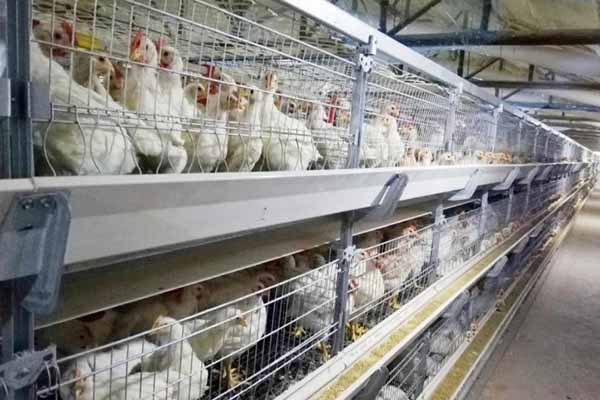Enhancing Kenya Chicken Farming with Advanced Equipment Fault Diagnosis Service
Time : 2025-04-28
In the bustling agricultural landscape of Kenya, chicken farming has emerged as a significant industry, offering numerous benefits to both farmers and the economy. As technology continues to revolutionize farming practices, the integration of modern equipment has become essential for efficient and sustainable poultry production. One such innovation is the fault diagnosis service for chicken farming equipment, which is set to transform the way farmers manage their flocks. Let’s dive into how this service can elevate Kenya’s chicken farming industry.
Understanding Chicken Farming Equipment Fault Diagnosis Service
The fault diagnosis service for chicken farming equipment is a sophisticated system designed to monitor and identify potential issues in machinery used in poultry farming. This service uses advanced technologies such as IoT (Internet of Things), AI (Artificial Intelligence), and machine learning algorithms to analyze data from various equipment components and predict potential malfunctions before they occur.
Why Kenya Needs This Service
Kenya’s chicken farming sector is growing rapidly, with a demand for high-quality meat and eggs. However, the industry faces several challenges, including equipment breakdowns, inefficient production processes, and a lack of technical expertise. The fault diagnosis service addresses these challenges by:
– Reducing Downtime: Early detection of equipment faults means less downtime and a more continuous production process.
– Enhancing Efficiency: By maintaining equipment in optimal condition, farmers can improve the overall efficiency of their operations.
– Cost Savings: Regular maintenance and prompt repairs can significantly reduce long-term maintenance costs.
How the Service Works
1. Sensor Integration: Modern chicken farming equipment is equipped with sensors that continuously collect data on various parameters like temperature, humidity, and vibration levels.
2. Data Transmission: The collected data is transmitted to a central server using IoT technology.
3. Analysis: AI algorithms analyze the data in real-time, identifying patterns that may indicate potential faults.
4. Alerts and Recommendations: Once a fault is detected, the system sends alerts to the farmer and provides recommendations on the necessary repairs or maintenance actions.
Benefits of Using the Service
1. Increased Productivity: By ensuring equipment is running smoothly, farmers can increase their productivity and output.
2. Better Livestock Health: Efficient equipment operation contributes to a healthier living environment for chickens, leading to better growth and egg production.
3. Expertise Without the Expense: The fault diagnosis service provides access to expert knowledge without the need for a full-time technician.
Case Studies: Success Stories from Kenya
Let’s look at a couple of success stories where the fault diagnosis service has made a significant impact:
Case 1:
Moses, a chicken farmer in Nakuru, Kenya, installed the fault diagnosis service in his poultry equipment. After a month, he received an alert indicating a potential issue with the ventilation system. He promptly addressed the problem, preventing any negative impact on his flock. Since then, his production has increased by 20%.
Case 2:
Lilian, a chicken farmer in Kiambu, Kenya, was struggling with fluctuating egg production. She subscribed to the fault diagnosis service, which revealed a problem with the feed system. By fixing the issue, she saw a consistent improvement in egg production and reduced feed wastage.
Implementation Challenges and Solutions
While the fault diagnosis service offers numerous benefits, its implementation may come with challenges. Here are some potential issues and solutions:
1. Cost: The initial cost of installing the system can be a barrier for small-scale farmers. Solution: Look for government subsidies or financing options to help offset the costs.
2. Internet Connectivity: Reliable internet connectivity is crucial for the service to function effectively. Solution: Explore options for rural internet connectivity solutions or local cellular data plans.
3. Lack of Technical Knowledge: Some farmers may not be familiar with technology. Solution: Provide training sessions and educational materials to help farmers understand and utilize the service effectively.
Future Prospects
As technology continues to advance, the fault diagnosis service for chicken farming equipment is expected to become even more sophisticated. Future developments may include:
– Predictive Maintenance: The ability to predict maintenance needs before they arise, further reducing downtime.
– Integration with Other Systems: Combining fault diagnosis with other farming systems, such as climate control and feed management.
– Remote Assistance: Providing remote support from experts to farmers, especially in remote areas.
Conclusion
The fault diagnosis service for chicken farming equipment is a game-changer for Kenya’s poultry industry. By enhancing efficiency, reducing downtime, and improving overall production, this service is set to revolutionize the way farmers manage their flocks. As technology continues to evolve, the potential for further advancements in this area is immense, ensuring a sustainable and profitable future for Kenya’s chicken farming sector.












